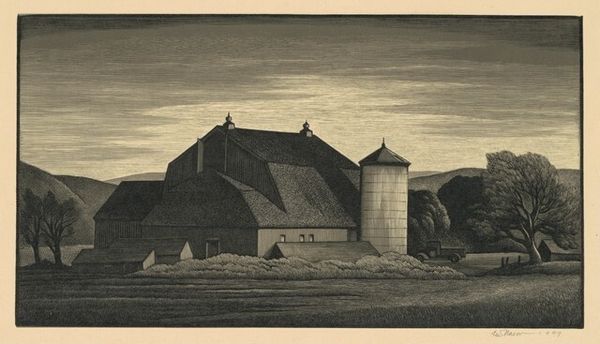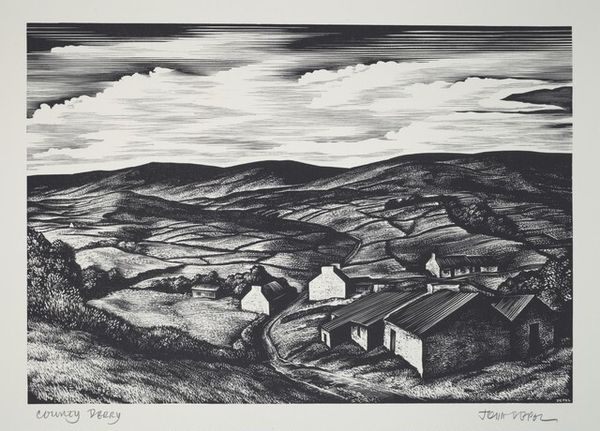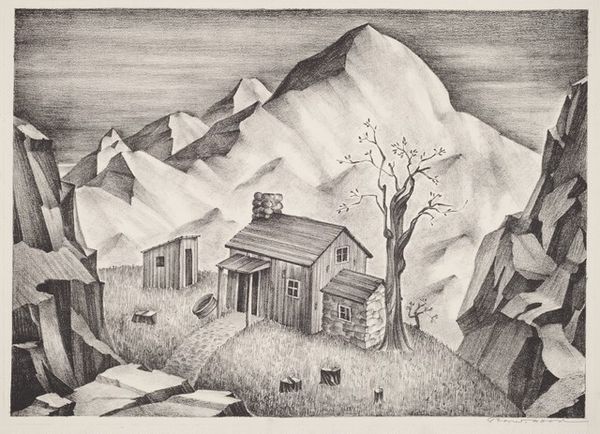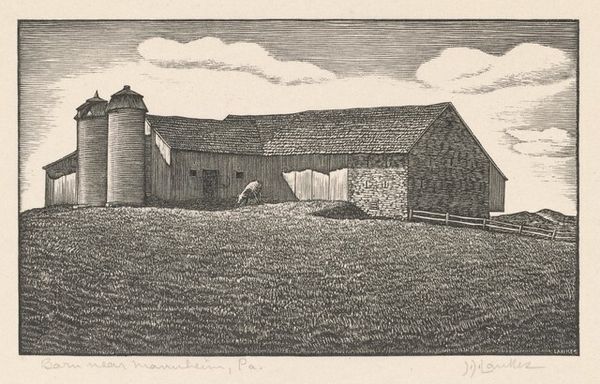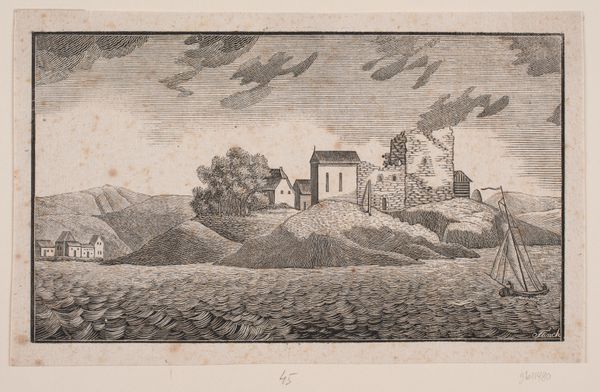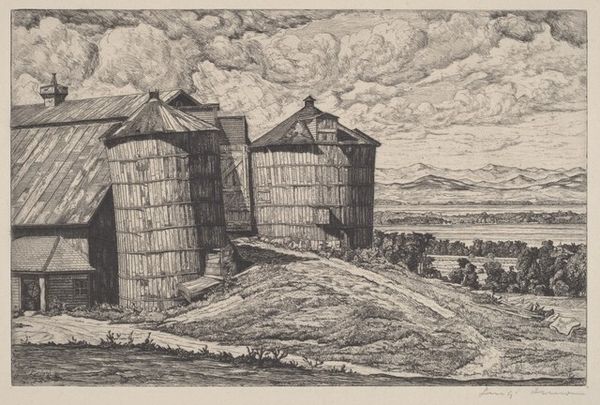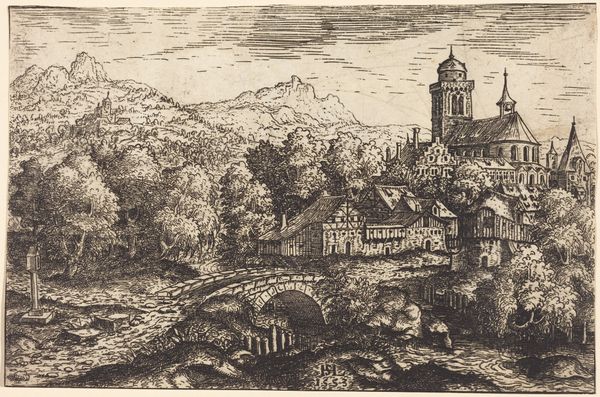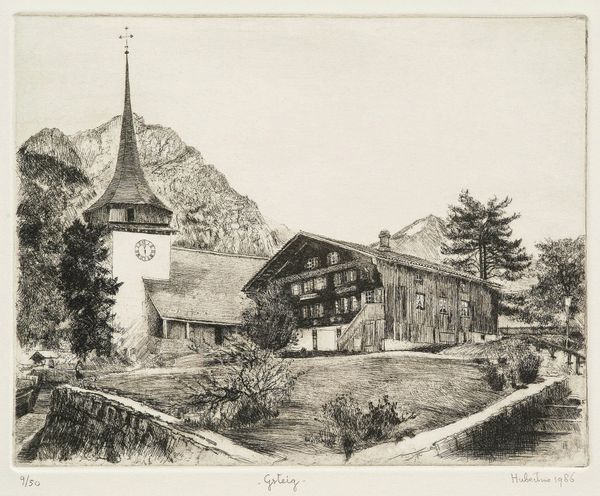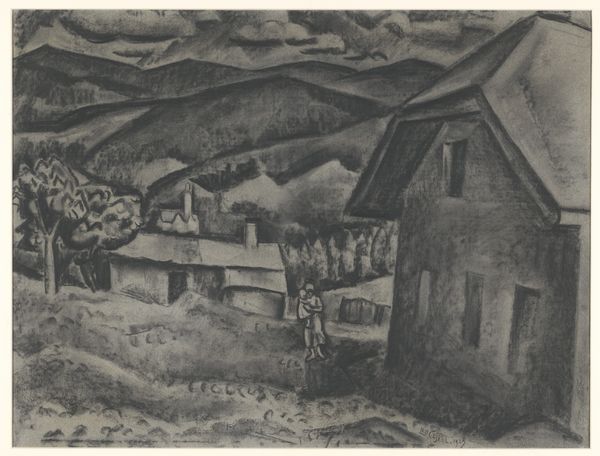
drawing, print, pencil
#
pencil drawn
#
drawing
# print
#
pencil sketch
#
landscape
#
pencil drawing
#
pencil
#
realism
Dimensions: Image: 254 x 355 mm Sheet: 324 x 427 mm
Copyright: National Gallery of Art: CC0 1.0
Curator: Let’s take a look at George White Good's, The White Barn, a print rendered circa 1939 using pencil. What strikes you about it? Editor: It evokes such a quiet, almost desolate mood. The limited tonal range contributes to that feeling, doesn't it? And those mountains in the background looming over the lonely farm… very powerful! Curator: I see that too. Thinking about the time, this work likely emerged during the lingering years of the Depression, perhaps reflecting the economic hardships and the idealization—or even the mythologizing—of rural life that offered a counterpoint to urban suffering. The whiteness of the barn is also interesting, considering it is surrounded by the dark and shaded landscape, representing purity, peace, or possibly even hope against that somber backdrop. Editor: It’s hard to miss the archetypal symbolism, indeed. Notice how the barn and silos together can be interpreted as symbols of both fertility and security within a cultural memory. Also, even just the image of a barn is deeply rooted in cultural history. I mean, they often represent abundance. The silos especially… the image almost hints at a pastoral idyll that seems, however, slightly threatened given the somber palette. Curator: That’s a good point. Although there's a sort of realistic depiction, there's also an undeniable formalism present in the piece—geometric precision, simplified forms... Think about the lack of explicit human presence: this invites us to consider the social and political systems at play in farming communities, and the almost monumental weight on these structures. Editor: So you're viewing the whiteness of the barn as a cultural construct or even an almost ethereal ideal. While that evokes feelings of hope to you, to me the almost skeletal lines hint at fragility. It’s as if these hard-won elements may soon dissolve or fall away. Curator: And that tension between solidity and ephemerality really gets at the heart of our anxieties about land ownership and environmental stewardship. It speaks to the historical shifts in the farming landscape— the rise and decline, success and inevitable failures and changing socioeconomics of labor at this time. Editor: Yes, well observed. Seeing with that historical and cultural lens, that certainly impacts my appreciation for the choices Good makes to render it in the first place. Curator: And in turn, identifying some visual archetypes lets us understand what he perhaps could be critiquing or celebrating at once. Thank you, this conversation really opened my eyes to many fascinating new ideas. Editor: A most rewarding conversation. Thank you.
Comments
No comments
Be the first to comment and join the conversation on the ultimate creative platform.
